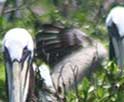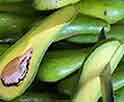Triceratops: Characteristics, Habitat, and Extinction Explained
The Mighty Triceratops: A Complete Guide to the Three-Horned Dinosaur
Reading time : 1 minute,
Discovery Chepe Id-770-ECO
Published in
06-24-2025

Few dinosaurs spark as much fascination as the Triceratops, a creature whose name means "three-horned face." This iconic herbivore roamed the Earth during the Late Cretaceous period and remains one of the most recognizable dinosaurs to this day.
Characteristics:
The Triceratops stood out for its distinctive physical features. It had a large bony frill at the back of its head and three horns two long ones above the eyes and a shorter one on its nose. Its body was massive and sturdy, measuring around 8 to 9 meters in length and weighing up to 12 tons.
This dinosaur walked on four strong legs and had a beak-like mouth adapted for cutting through tough vegetation. Its skin was likely thick and scaly, providing some protection against predators like the Tyrannosaurus rex.
Habitat:
Triceratops lived in what is now North America, particularly in regions like present-day Montana, Wyoming, and the Dakotas. During the Late Cretaceous, this area featured lush plains, dense forests, and river valleys ideal for a large herbivore.
The climate was semi-tropical with distinct wet and dry seasons, providing a wide range of plant life for feeding. Fossil evidence suggests Triceratops shared its environment with other well-known dinosaurs, including the Ankylosaurus and Edmontosaurus.
Diet:
As an herbivore, Triceratops primarily consumed low-growing plants. Its strong beak and rows of cheek teeth allowed it to clip and grind tough vegetation like ferns, palms, and cycads.
1- The beak cut the plant.
2- The teeth behind the beak ground the food for digestion.
3- Its large gut helped break down fibrous materials.
Some paleontologists believe that Triceratops may have also fed on shrubs and young tree shoots, especially in periods of environmental stress.

The World of Triceratops: Habitat, Lifestyle, and Demise
Reproduction:
Like other dinosaurs, Triceratops reproduced by laying eggs. Although no confirmed Triceratops nests have been discovered, scientists believe their reproductive behavior was similar to that of other ceratopsians.
a) The female likely laid a clutch of eggs in a shallow nest.
b) The eggs would have been guarded until hatching.
c) Hatchlings probably stayed with the group for protection.
Some studies, based on juvenile fossil remains, suggest that young Triceratops may have had shorter horns and less developed frills, which evolved as they matured.
Extinction:
Triceratops became extinct approximately 66 million years ago during the Cretaceous Paleogene (K-Pg) extinction event. This mass extinction, likely caused by a massive asteroid impact near what is now the Yucatán Peninsula, wiped out around 75% of Earth's species, including all non-avian dinosaurs.
The impact caused intense fires, acid rain, and a global -nuclear winter- that drastically altered the climate. The resulting collapse of ecosystems and food chains proved fatal for large herbivores like the Triceratops.
Legacy and Modern Discoveries:
Triceratops remains one of the most studied dinosaurs. Its fossils are among the most abundant ever found, providing valuable insight into dinosaur biology, behavior, and evolution. Museums around the world feature Triceratops skeletons, and it continues to be a favorite in popular culture and education.
For more scientific information about Triceratops, you can visit the Smithsonian Institution's page: Smithsonian: Triceratops
The Triceratops was more than just a horned dinosaur it was a complex and fascinating creature that played a vital role in its ecosystem. Its powerful form, unique features, and tragic extinction make it an enduring symbol of the prehistoric world.
Understanding dinosaurs like Triceratops not only fuels our imagination but also helps us appreciate the delicate balance of life on Earth and how quickly it can change.
See Also
Discovery Chepe
Most read...















